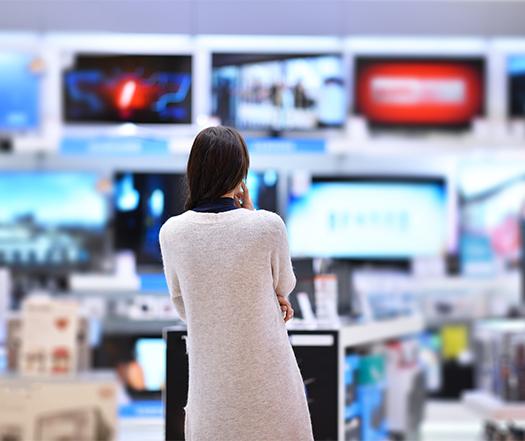
By Anthony Smith-Chaigneau, Senior Product Marketing Director, NAGRA
The average TV-buyer today is spoilt for choice.
Thanks to the rise of 4K UHD and HDR, consumers have a huge range of viewing options to consider. But in stores across the world, it's becoming clear that these technical features haven't been fully clarified or standardised to benefit the buyer.
Say an electronics retailer sells two kinds of 4K UHD TV sets. The difference between them may be slight, or perhaps even irrelevant for what the consumer wants to use it for. So how are sales stimulated? By emphasising those technical features.
TV manufacturers used to talk about immersion when it came to 4K UHD. But to continue their sales growth, they have now opted to simply add various tags, acronyms and buzzwords – HDR10, HDR10+, UHD Premium, HLG and more. Do customers necessarily understand the difference between one and the other? Probably not.
It's true that HDR – the apparent key differentiator for manufacturers – exists in various forms. The good news is that most 4K UHD TVs implement two HDR standards – HDR10, which defines how movies will be rendered on an HDR TV. The other is HLG, which takes into account backward-compatibility with non-HDR TVs. The UHD Alliance is also working to ensure "Premium UHD devices and content will be clearly marked so consumers can easily identify them in-store." So while definitive clarification is still needed, it's heartening to see positive steps have been made for the sake of the consumer.
So what has to happen?
The industry should arrive on definitive clarification and standardisation on HDR – before the range and popularity of the HDR format grows to the point where nobody can keep up. Otherwise, we risk disconnecting the industry’s product offering from consumer expectation and understanding – there’s no use in having a hundred HDR formats if the consumer doesn’t know the difference between them. Consider 1080p HDR. For a broadcaster, there’s an advantage that they deliver content via the existing 1080p but with better pixels, as they only require a small amount of extra bandwidth (unlike other formats). But they’re still waiting for a consumer uptake in HDR TVs to launch it.
Let’s not forget, a fully immersive TV viewing experience and a raft of 4K UHD content are available to the consumer right now. The industry must not inhibit consumers by creating unnecessary doubt over compatibility. Without proper clarification and standardisation, the TV-buying experience could become a labyrinth of options and compatibility issues that will ultimately confuse, and even dissuade, the consumer. And with a huge expansion of incredible functionality options to come (8K, 11K to name just two), it’s important they don’t miss out because they’re lost in a sea of acronyms and buzzwords.
If you wish to know more about the solutions and services we offer to help service providers deliver to their consumers a compelling, frictionless access to all content on all screens, please contact us at [email protected].
